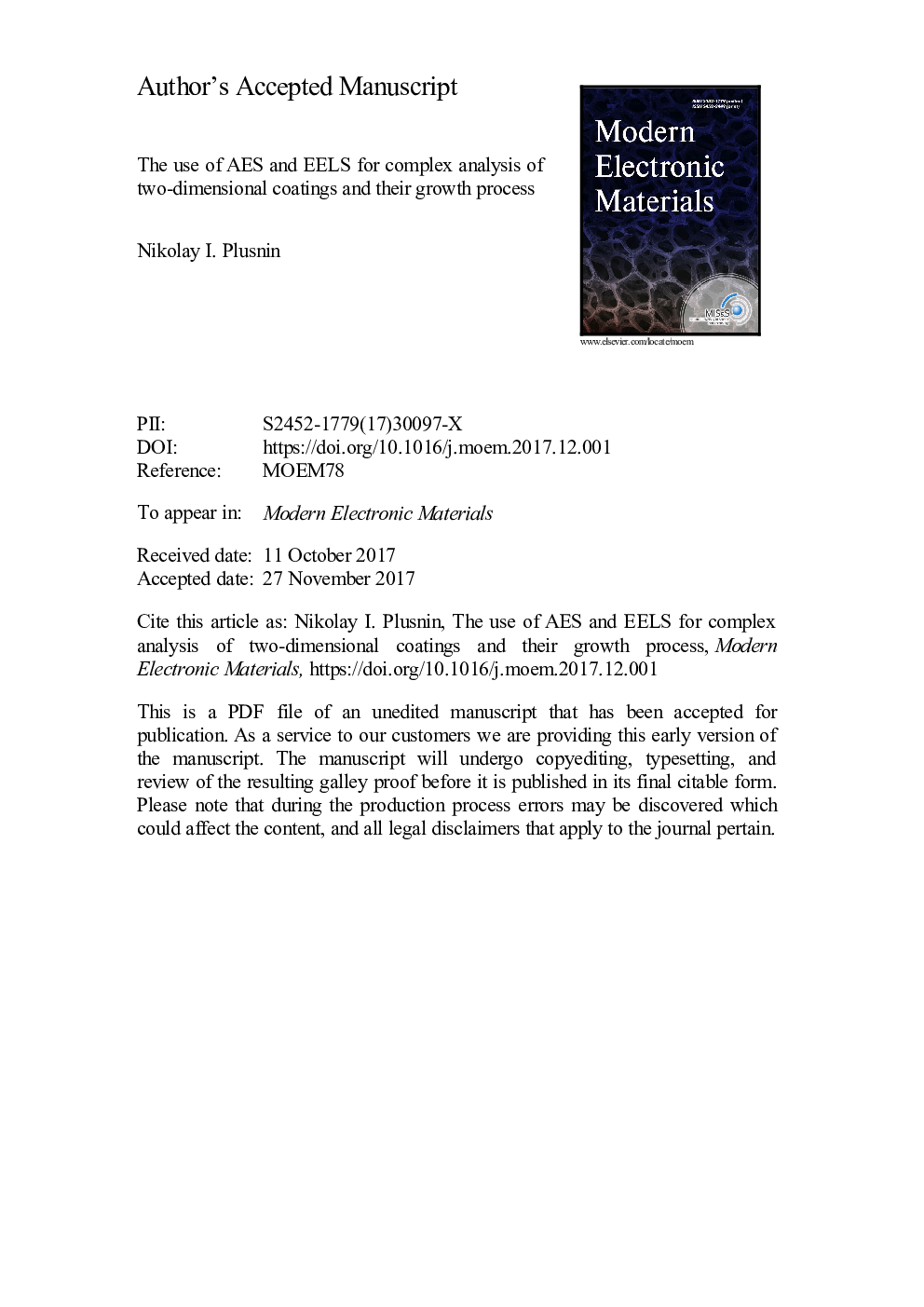| کد مقاله | کد نشریه | سال انتشار | مقاله انگلیسی | نسخه تمام متن |
|---|---|---|---|---|
| 7924408 | 1512276 | 2017 | 39 صفحه PDF | دانلود رایگان |
عنوان انگلیسی مقاله ISI
The use of AES and EELS for complex analysis of two-dimensional coatings and their growth process
دانلود مقاله + سفارش ترجمه
دانلود مقاله ISI انگلیسی
رایگان برای ایرانیان
موضوعات مرتبط
مهندسی و علوم پایه
مهندسی مواد
مواد الکترونیکی، نوری و مغناطیسی
پیش نمایش صفحه اول مقاله

چکیده انگلیسی
Additional possibilities for complex analysis of two-dimensional coatings (thickness <1Â nm or <10Â ML) grown by physical vapor deposition (PVD) on a single-crystal silicon substrate under two deposition regimes have been revealed: 1) low-temperature (at a low beam temperature) and 2) high-temperature (at an elevated temperature of the beam), respectively. Coatings, including those in the form of pure metal and a silicide mixture, and their interface with the substrate have been analyzed by Auger electron spectroscopy (AES) and characteristic electron energy loss spectroscopy (EELS). A technology of the deposition from a ribboned source has been developed to ensure both deposition regimes. The conventional uses of AES are limited to the characterization of elemental composition, electron energy structure and coating thickness. For EELS, the conventional uses are the determination of phase types (valence electron density) and phase formation stages. The simultaneous use of the two methods and the choice of equal (and minimal) probing depths, ~ 2.5Â nm (primary electron energy 300Â eV), provided new possibilities for studying subnanometric two-dimensional coatings, in particular, for comparison of coating composition and density. The chosen probing depth also made it possible to characterize the interface between the coating and the substrate. At the same time, the use of similar probing depths made allowed using the thickness of the coating obtained from AES data for analyzing EELS data. In addition, other possibilities have been considered, i.e., the use of the following dependences: a) the energy of the plasmon satellite of the Auger peak vs the thickness of the coating for analyzing changes in the electron density in the near-interface layer of silicon; b) the attenuation of the Auger signal generated by marker atoms at the interface between the coating and the substrate for localizing the adsorption sites of the deposited atoms; c) the intensity and energy of the loss peaks in the EELS as a function of the primary electron energy for depth profiling of coating compositions. The use of two depth attenuation functions for two probing depths has enabled a quantitative Auger analysis of binary coatings. These advantages have provided the possibility of a more complete characterization of two-dimensional coatings and their interfaces with substrates, as well as the coating formation processes. In particular, it has for the first time become possible to identify the wetting nanophase layer of metals on silicon substrates, to investigate the process of its formation and to show how its composition depends on vapor-phase physical deposition modes.
ناشر
Database: Elsevier - ScienceDirect (ساینس دایرکت)
Journal: Modern Electronic Materials - Volume 3, Issue 4, December 2017, Pages 131-141
Journal: Modern Electronic Materials - Volume 3, Issue 4, December 2017, Pages 131-141
نویسندگان
Nikolay I. Plusnin,